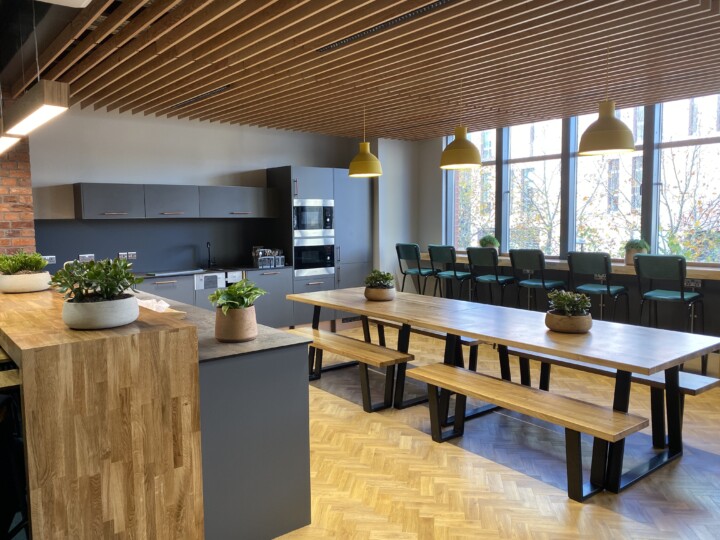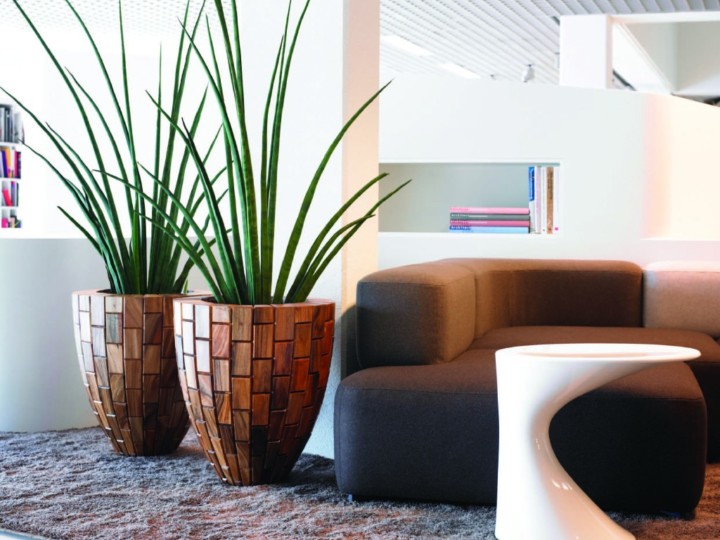
In our modern, fast-paced world, it’s easy to get caught up in the hustle and bustle of daily life, detached from the natural world that surrounds us.
However, within all of us lies a profound connection with nature—an affinity that has shaped our evolution and influenced our well-being for millennia, and bringing natural elements back to our indoor spaces, either through plants for our homes and workplaces, water features or art depicting natural scenes, are easy ways to maintain that connection.
This innate bond is known as biophilia, a term coined by biologist Edward O. Wilson in the 1980s. Biophilia stems from the Greek words “bios,” meaning life, and “philia,” meaning love or affinity. It represents the instinctive bond humans have with nature and all living organisms. Our ancestors relied on their intimate relationship with the natural world for survival, seeking shelter, food, and resources. As we evolved, this innate connection persisted within us, even as we built cities and developed technologies that can physically distance us from nature.

The importance of Biophilia
Wellbeing-inspired Biophilia and productivity:
Numerous studies have highlighted the positive impact of nature on our health. Exposure to green spaces, such as parks or forests, has been shown to reduce stress, lower blood pressure, and improve cognitive function. Biophilic elements, such as natural light, indoor plants, and views of nature, in our built environments have been linked to increased productivity, enhanced creativity, and a sense of overall well-being.
Restoring Balance:
In our increasingly urbanized societies, we often find ourselves disconnected from the natural world. Embracing biophilia allows us to restore that balance by reconnecting with nature.
Conservation and Sustainability:
By recognizing our inherent connection with nature, we are more likely to want to protect and preserve the environment. Biophilic design principles inspire architects and urban planners to create sustainable, eco-friendly spaces that promote harmony with nature.
Educational and Therapeutic Potential:
Biophilia plays a crucial role in education and therapy. Learning in natural environments or incorporating elements of nature into educational settings has been shown to improve attention, engagement, and academic performance in children. Additionally, nature-based therapy, such as horticultural therapy or ecotherapy, uses the healing power of nature to promote mental health, reduce anxiety, and enhance overall well-being.

Fostering Biophilia
Embrace Nature in Your Surroundings:
Incorporate biophilic elements in your home or workspace. Bring in house plants or office plants to purify the air and add a touch of greenery. These plants not only beautify your space but also improve indoor air quality. Don’t want live plants? Even fake, or replica, plants bring biophilic benefits.
Spend Time Outdoors:
Make an effort to regularly immerse yourself in nature. Take walks in parks, hike in forests, or simply sit in a garden surrounded by blooming flowers and flourishing trees. Disconnect from digital devices and pay attention to the sights, sounds, and smells of the natural world.
Biophilic Design:
When designing or renovating spaces, incorporate biophilic design principles. Use natural materials like reclaimed wood or stone, include large windows to provide views of nature, and integrate water features or living walls adorned with cascading vines to bring the outdoors inside.
Connect with Plants:
Engage with plants by cultivating a garden, window box, or even a plant in a pot with herbs, flowers, and vegetables. Observe the unique characteristics of each plant and appreciate their growth.
Biophilia reminds us of our inherent connection to nature and the profound influence it has on our well-being. By embracing biophilia and incorporating elements of nature into our lives, such as indoor plants, we can enhance our physical and mental health, restore balance, promote conservation, and tap into the educational and therapeutic potential of the natural world.




